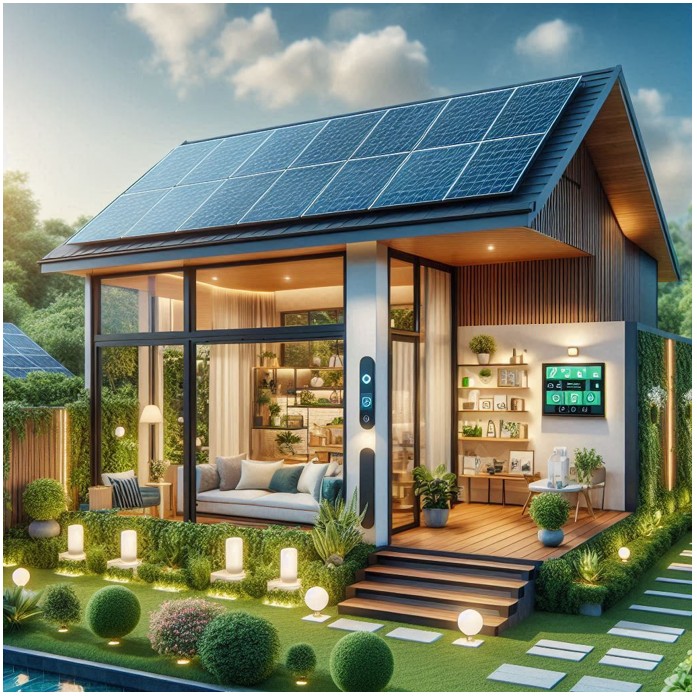The Green Guide: Looking for Energy-Efficient Features in a Home
As awareness of environmental impact and energy costs increases, many homebuyers are prioritizing energy-efficient features when searching for their perfect home. Energy-efficient homes not only reduce your carbon footprint but also save money on utility bills and create a more comfortable living environment. Here’s a guide to help you identify key energy-efficient features to look for when buying a home.
Why Energy Efficiency Matters
1. Cost Savings: Energy-efficient homes use less energy, leading to lower utility bills and long-term savings.
2. Environmental Impact: Reducing energy consumption helps decrease greenhouse gas emissions, contributing to a more sustainable planet.
3. Comfort: Energy-efficient homes often have better insulation and ventilation, resulting in a more consistent indoor temperature and improved air quality.
4. Resale Value: Homes with energy-efficient features are becoming more desirable in the real estate market, potentially increasing your property’s value.
Key Energy-Efficient Features to Look For
1. Insulation and Sealing
• Proper Insulation: Ensure the home has adequate insulation in the walls, attic, and floors to minimize heat loss in the winter and heat gain in the summer.
• Air Sealing: Look for a home that is well-sealed to prevent drafts and leaks. This includes weatherstripping around doors and windows and caulking gaps and cracks.
2. Energy-Efficient Windows
• Double or Triple Glazing: Windows with double or triple glazing provide better insulation and reduce heat transfer.
• Low-E Coatings: Low-emissivity (Low-E) coatings on windows reflect heat, keeping your home cooler in the summer and warmer in the winter.
3. Efficient Heating and Cooling Systems
• High-Efficiency HVAC: Look for heating, ventilation, and air conditioning (HVAC) systems with high efficiency ratings, such as ENERGY STAR-certified units.
• Programmable Thermostats: These thermostats allow you to set heating and cooling schedules to reduce energy use when you’re not home.
4. Energy-Efficient Appliances
• ENERGY STAR Appliances: Appliances with the ENERGY STAR label meet strict energy efficiency guidelines set by the Environmental Protection Agency (EPA).
• Smart Appliances: These devices can be controlled remotely and often have energy-saving modes.
5. Solar Panels
• Renewable Energy Source: Solar panels can significantly reduce your reliance on traditional energy sources and lower your electricity bills.
• Incentives and Rebates: Check for local, state, or federal incentives and rebates for installing solar panels.
6. Water-Saving Fixtures
• Low-Flow Fixtures: Look for low-flow toilets, showerheads, and faucets that reduce water usage without sacrificing performance.
• Efficient Water Heaters: Tankless water heaters or high-efficiency tank models use less energy and provide hot water on demand.
7. Lighting
• LED Bulbs: Light-emitting diode (LED) bulbs use less energy and last longer than traditional incandescent bulbs.
• Natural Lighting: Homes with ample natural light reduce the need for artificial lighting during the day.
Tips for Homebuyers
1. Energy Audit: Consider requesting an energy audit to assess the home’s energy efficiency and identify areas for improvement.
2. Check Utility Bills: Ask the current homeowner for past utility bills to get an idea of the home’s energy consumption.
3. Research Rebates: Look into available rebates and incentives for energy-efficient upgrades in your area.
4. Work with a Green Realtor: Find a real estate agent who specializes in energy-efficient homes and can help you identify the best options.
Final Thoughts
Looking for energy-efficient features in a home is a smart move for both your wallet and the environment. By prioritizing these features, you can enjoy a comfortable, cost-effective, and sustainable living space. Happy house hunting!


 Facebook
Facebook
 X
X
 Pinterest
Pinterest
 Copy Link
Copy Link


